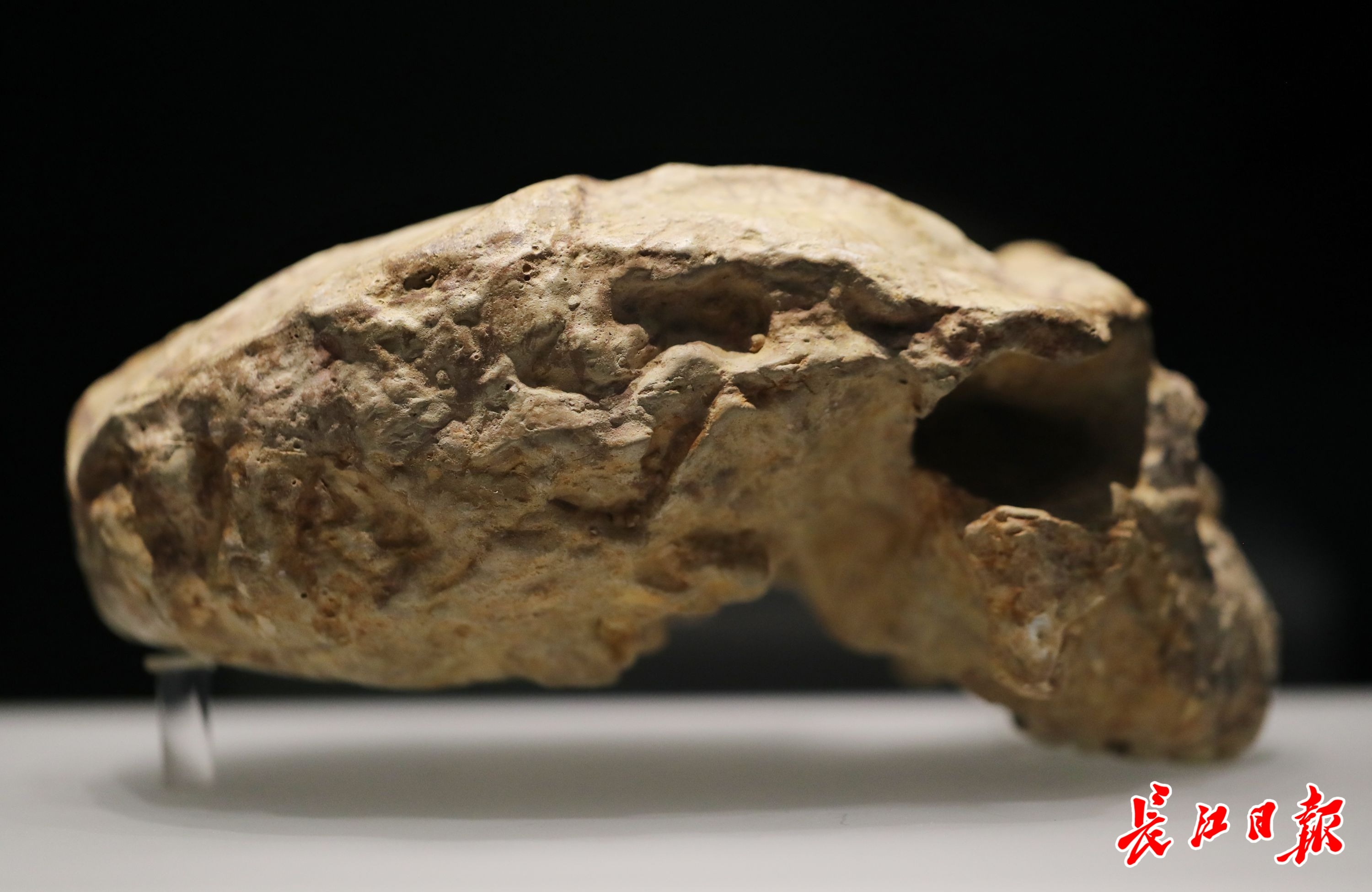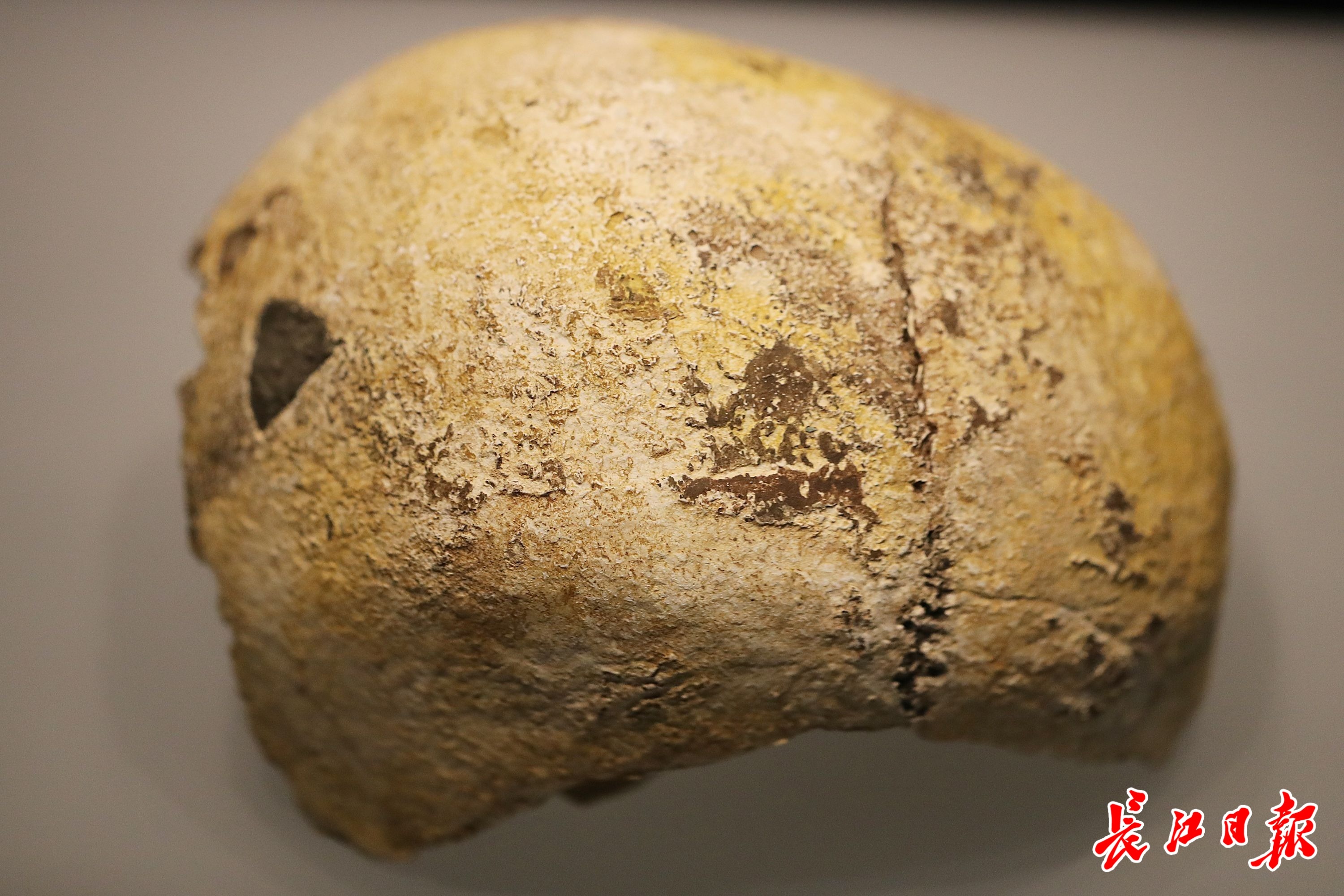Two million -year -old skull fossils are less than 300 meters apart. This rare discovery has world significance
Author:Changjiang Daily Time:2022.09.05
"True the source of Jingchu culture is long and profound." On the evening of August 26, the visiting group of "Reading my country -Hubei Changjiang Thousand Miles" came to the Hubei Provincial Museum to visit the "Lang County People" exhibition hall, read the reading hall, read the reading hall, read Jingchu Culture shows the history of human beings, the history of 10,000 years, and the history of civilization for more than 5,000 years.
Two county -soul skull fossils are less than 300 meters apart.

The "Luxian No. 1 Sluthards" at the Hubei Provincial Museum is the most intact -bone bone fossil in my country. Changjiang Daily reporter Qiu Yan
When I walked into the "Langxian People" exhibition hall, the members of the visiting team first saw the "Map of the Important Site of the Hubei Paleolithic Age". Fang Qin, the director of the Hubei Provincial Museum and the dean of the Hubei Provincial Institute of Cultural Relics and Archeology, told the visiting group that Hubei was one of the areas with the largest number of ancient human fossils in my country, and the span of the times was long, indicating that Hubei was an important area for human origin.
Fang Qin introduced that the Giant Ape Cave in the Qingjiang River Basin, which was located in the Yangtze River, found that the teeth fossils of the beginning of the year of the Enshi and the mammalian fossils of the contemporary era, as well as related sites and living environments. One of the earliest human ruins is of great value for exploring the origin of human beings.
Fang Qin pointed to the upper reaches of the largest tributaries in the Yangtze River that in the Xuexueliangzi of Xiyang County in Shiyan City, it was found that the site of the people of Yixian County was about 1 million years ago. Fossils, and obtained the number of mammalian fossils, hand picks, hand axes and other stone tools, as well as related living environments with the number of strata from Lizhian people.
"On the same ground, it is less than 300 meters away. At the same time, it was found that two ancient human fossils were found in the history of archeological history." Fang Qin introduced that the period of the people in Lixian was evolved in the period of 1 million years before this million years. In the critical period, its discovery has deepened the study of the evolution of upright people in about 1 million years away from this year. It is extremely rare in the research of human origin in the world, especially for the "multi -regional evolution theory" of human origin of the origin of human beings, which has global significance.
Fang Qin further introduced that the upper reaches of the Hanjiang River with the people of the county were also about 750,000 years ago, about 750,000 years ago, the Meixian Meipu ape man, about 600,000 years ago, the Bailong Cave Ape man, and about 100,000 years ago. Fossils such as Huanglongdong Ape man, as well as the mammalian fossils and living environment information of the same period, are also of great significance to the research on human evolution.
"The middle and upper reaches of the Hanjiang River centered on the people in the county are the important areas of Chinese human evolution research. It can be called the human evolutionary corridor. "Fang Qin said.
The Changyang mast ping site has witnessed the origin of the Yangtze River's civilization of about 15,000 to 10,000 years ago

The Hanyang Museum's "Hanyang Head Covering Bone Fossils" exhibited. Changjiang Daily reporter Qiu Yan
It is understood that the founder belongs to the early upright person, and the people of Dixian are late uprights. After the upright person, it is a whiseness. Homo sapiens have lived about 200,000 years ago.
Fang Qin introduced that Hubei is an important area for ancient human reproduction and activities. Human fossils and relics discovered by archeological discovery show that almost all of the different stages of human evolution have left their footprints here. In addition to upright people, there are many premiums in Hubei. Destination.
In 1956 and 1957, human upper jaw bones and a molars fossils were found in the dragon cave in Zhongjiawan, Changyang County, Hubei. Fang Qin said that it can be seen from the upper jaw orthopedic specimen that Changyang people are more progressive than Beijingers, which belongs to the early premium type, about 200,000 to 10,000 years. They are close to modern people and can make different stone tools.
In 1997, a cadre of Hannan District Mao Yongyuan collected a skull fossil in the Yangtze River Beach near Saomoshan, Wuhan, and was a female individual of 25-35 years old. Fang Qin said that Hannan District was originally Hanyang County, so it was named "Hanyang". "Hanyang people" belong to the late premium, about 20,000 years ago. In addition to the primitives of tools, they are similar to modern people, and they only retain very little primitive properties.
Some members of the visiting delegation asked, as the ancient humans in Hubei became smarter, from the perspective of the relics, did their living standards get better and better?
Fang Qin expressed his affirmation. He said that many ancient human relics in Hubei showed their improvement of their living standards. Located in the Jingzhou Jigongshan site, which is about 20,000 years away from the Yangtze River, it has witnessed that humans walk from caves to plain to live, and their living conditions are much better. Jigongshan Site is the first time in the old stone in the plain areas found in China that was discovered by my country for the first time. Its discovery and research have earned the history of human development of the Jianghan Plain area 40,000 to 50,000 years earlier. Human beings study and explore milestones in the plains.
Before there are two pictures of rice fossils, Fang Qin continued to answer: The Changyang Mastage Ping Site, Hubei, which is about 10,000 years old, is located in the Qingjiang River Basin in the Yangtze River. About 15,000 to 10,000 years of the origin of the Yangtze River's civilization, people had eaten their own rice at that time.
(Changjiang Daily reporter Li Jianhua correspondent Zhang Yushan)
【Edit: Zhang Jing】
For more exciting content, please download the "Da Wuhan" client in the major application markets.
- END -
my country has not found a clear tri -stacked dinosaur fossil but early dinosaur footprints show that dinosaurs have been activated in the Sichuan basin at this time

On the morning of August 26, the 50th Anniversary International Academic Symposium...
For non -legacy communities, children depict the colorful "Chinese colors"

Jimu Journalist Li QingVideo editing Li QingIntern Jia Shishan Chen GuoCorresponde...